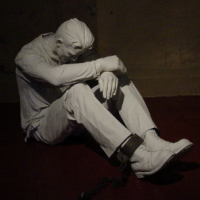State Agrees to Dramatically Scale Back Solitary Confinement

In a settlement (pdf) that could cut by more than half the number of California inmates held in solitary confinement, the state agreed in federal court to prison reforms sought by advocates for more than a decade.
The agreement was reached in response to a lawsuit brought in 2009 that was eventually expanded into a class action on behalf of an estimated 2,858 prisoners—down from 4,000—held in prolonged, and almost complete, isolation. Jeffrey Beard, the secretary of the California Department of Corrections and Rehabilitation (CDCR), said at a press conference Tuesday that as many as 1,800 prisoners could be affected.
The state agreed to be more selective about who it threw in isolation, change the often-windowless environment and do something about the indefinite stays that have drifted into years and decades. “This agreement allows us to continue a process of change relative to how we manage gangs,” Beard said.
Civil rights activists have long decried the psychologically cruel and unusual aspects of the punishment, but were joined in the lawsuit in 2012 by claimants who thought tossing people in solitary just because they were affiliated with, or accused of being affiliated with, a gang was a denial of due process under the Fourteenth Amendment.
Many of them had not broken any serious rules.
The settlement ends that practice. Inmates who try to escape, get caught with drugs, practice extortion or commit some mayhem can still be put in isolation. Prisoners who are deemed too dangerous for the general population will be housed in a separate unit that will allow them a modicum of social interaction and out-of-cell experience.
Pelican Bay State Prison has 1,100 inmates in isolation. More than 500 of them were there for more than a decade, 200 for more than 15 years and 78 topped two decades when the Center for Constitutional Rights filed the lawsuit in 2012.
United Nations Special Rapporteur on Torture, Juan E. Mendez, called long-term solitary confinement torture in a 2011 report and submitted a brief on behalf of the prisoners.
U.S. District Judge Claudia Wilken still has to sign off on the deal and then California would have one year to make the changes. Federal Magistrate Judge Nandor Vadas would oversee these reforms for two years, but the term could be extended if the CDCR breaks the agreement.
–Ken Broder
To Learn More:
California Prisons Agree to Limit Solitary Confinement (by Ian Lovett, New York Times)
California Prison Abuse Case: Solitary Confinement Policy Softened (by Howard Mintz, San Jose Mercury News)
California Agrees to Move Thousands of Inmates Out of Solitary Confinement (by Paige St. John, Los Angeles Times)
Landmark Agreement Ends Indeterminate Long-Term Solitary Confinement in California (Center for Constitutional Rights)
Federal Judge Gives Class-Action Status to California Prisoners Protesting Solitary Confinement (by Ken Broder, AllGov California)
Todd Ashker et al v. Governor of the State of California (U.S. District Court for the Northern District of California Oakland Division) (pdf)
- Top Stories
- Controversies
- Where is the Money Going?
- California and the Nation
- Appointments and Resignations
- Unusual News
- Latest News
- California Forbids U.S. Immigration Agents from Pretending to be Police
- California Lawmakers Urged to Strip “Self-Dealing” Tax Board of Its Duties
- Big Oil’s Grip on California
- Santa Cruz Police See Homeland Security Betrayal in Use of Gang Roundup as Cover for Immigration Raid
- Oil Companies Face Deadline to Stop Polluting California Groundwater





